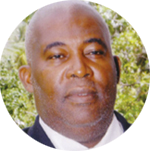
WELCOME students to the Open School for the third and final term. I also wish to welcome students to another lesson in the Open School on Teaching Autistic children. The school is open to parents, guardians, teachers, students and members of the public. This is the tenth in a series of lessons which is done in the Open school every two weeks. It is my hope that students will acquire knowledge and a better understanding of autistic children.
At the end of the lesson, students will be able to (a) explain, in a simple sentence, what is Autism (b) students will be able to list two strategies in teaching Autistic Children.
At the end of the lesson, we will reflect on how much we have learnt through a simple evaluation.
Social and Educational Research has indicated that 1 out of every 70 persons are struck with autism.
Now if we accept that formula, then with a population of approximately 180,000 people in St. Lucia, there are approximately 2,571 persons who are autistic. Now one must be trained or know how to identify an autistic person
A very important question is what is Autism?
Autism is a condition that affects how a person thinks, feels, interact with others, and experiences their environment.
At this point, I wish to discuss two cases of my attempt to interact, or should I say attempting to interact with two children who are autistic.
Several years ago, I paid a visit to a school for autistic children in Gros Islet. I spoke with a group of three children. At the end of the discussion, I approached the youngest of the three children, and he moved away from me very quickly. Now, I understood the reason why he acted that way. Although I had been in discussion with the group of three, he did not trust me. The trust factor is critical in the interactive processes with autistic children. You must gain their trust.
Several years later, I met another of the three children. He was standing outside the 1st National Bank with his aunt. I called his name and asked how he was doing. He answered heartily and with much vigour. But he never looked me in the eye! Instead, he turned his head to the right. Again, I understood what was happening. He had some difficulty focussing on the conversation.
I must say at this point that once autistic children can receive the right training; they could become exceptional learners. In fact, as I write there are many outstanding and exceptional autistic learners all around the world.
The following are some tips to help teachers and parents teach autistic children or learners:
1. Avoid sensory overload. Indeed, when children are taught, we engage their sense of sight, touch, hearing, smell or and taste, or a combination of those senses during the lesson. The facilitator of the learning process must avoid engaging too many of these senses at once. For example, the lesson could emphasize the sense of touch and sight only to allow for proper assimilation or understanding of the lesson.
2. Use graphics or we say visuals in education. The teacher or parent must use charts and as many items that they can see. Avoid the lecture types of lessons where the teacher speaks quite a lot during the lesson. In education we say, “chalk and talk.” The ideal would be to set up a visual classroom.
3. Create a communication environment. And in the process of communicating, treat autistic children as individuals. The teacher should call names: “John”, “Thomas”, “Rashaad”, “Joy” or “May”, instead of “Class call the name of this fruit.” And very importantly give a lot of information to your autistic students.
4. Manage time effectively. That is lessons must not be too long because their attention span is not very long. However, autistic children must be given sufficient time to complete a task that is given.
And the instructions must be clear.
5. Support or reinforce positive behaviours. Autistic children do many positives things which must be recognized, And, when the teacher notices those behaviours he or she must call out the student for such good behaviour.
6. Keep records of the autistic child’s performance. Autistic children should not be assessed in the same way that normal children would be assessed. Samples of their work should be kept in a portfolio which must be opened for each student. This record would show or indicate how the student is performing. It must be pointed out that the parent or teacher must have special skills in keeping a portfolio.
7. Keep language concrete. By that I mean instead of animals, we can say cat, dog, blackbird, yellow tail and so on. Instead of saying ground provision, tell them dasheen, sweet potatoes, white yam or yellow yam and teacher could show the difference.
8. Directly teach social skills. Some social skills are: Getting along with others, ask for help when you need it, stay calm with others, follow the rules, listen to others, do nice things for others, follow the steps,
Our education speaks about leaving no child behind therefore autistic children must be catered for in our education system.
Now two questions for you:
1. In very simple language tell me what is autism?
2. Give two strategies that could be used to teach autistic children,












